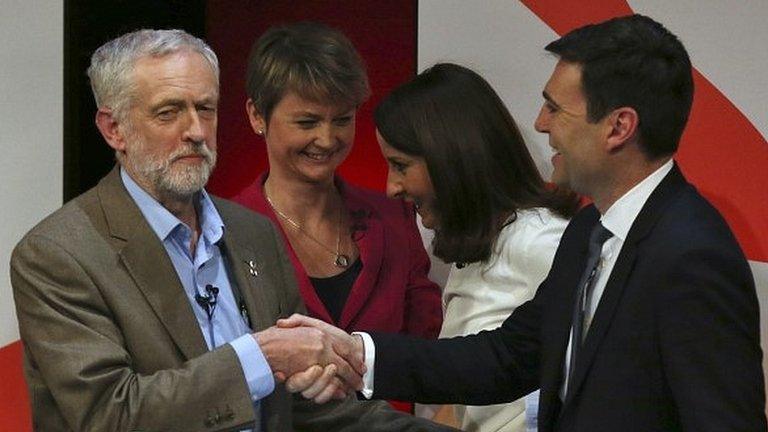Labour leadership: Is Jeremy Corbyn really going to win?
- Published
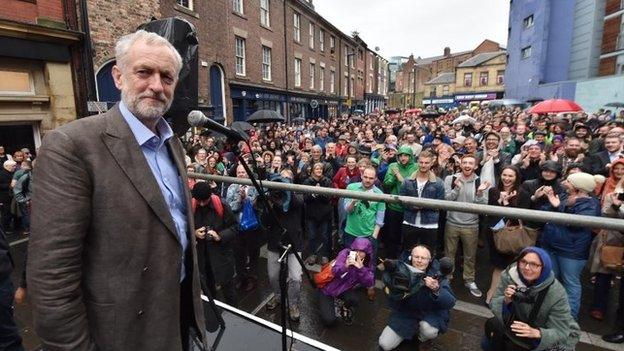
Jeremy Corbyn is the favourite to be the next Labour leader according to the bookmakers, the opinion polls and his own opponents. But is a Corbyn victory assured?
Opinion polls have not got a great reputation after they failed to predict the outcome of the general election.
But they are just about all we have to go on when it comes to predicting the outcome of what has turned out to be - after an unpromising start - a fascinating and increasingly bitter contest to replace Ed Miliband as Labour leader.
And the message from the only two polls published so far on the likely result - as opposed to what people think about the merits of the candidates - could not be clearer: It will be Jeremy Corbyn.
But conducting an accurate survey of the Labour electorate is an almost impossible task.
More than 600,000 people are likely to get a vote in the election.
But who are they? Where do they live? What is their phone number?
Shopping centres
The party knows who some of them are but it will not be releasing their details. It is still checking the hundreds of thousands of new supporters and members who have signed up since May, many at the last minute.
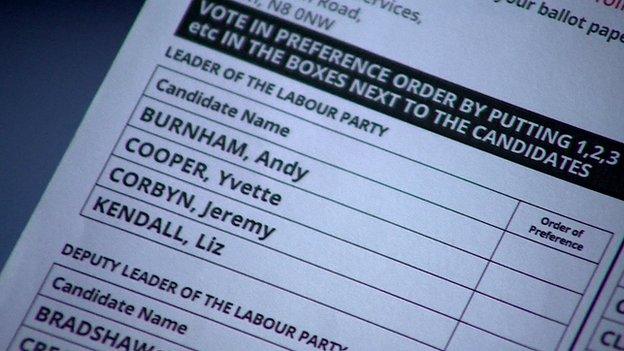
Labour members are receiving their ballot papers
And 600,000 might sound like a lot of people but it is about 1% of the adult population of the UK.
You would spend many months wandering around shopping centres with a clipboard to find enough of them to get a representative sample.
So how did YouGov, the polling company behind the two polls, do it?
The company has an online panel of half a million people who take part in their opinion surveys.
The ones who identified themselves as Labour supporters were polled on the leadership.
So what other evidence is there for a Corbyn victory?

The YouGov polls

The first poll, external, conducted between 17 and 21 July, with a sample size of over 1000 eligible voters in the contest put Jeremy Corbyn on 43% on the first ballot, giving him a huge 17 points over Andy Burnham on 26%.
But remember, under the Alternative Vote system (see below), the winner needs more than 50% of the votes to win.
So You Gov redistributed second preferences until the threshold was reached.
The final result suggested a narrow Corbyn win with 53% of the votes in a runoff against Andy Burnham in second place with 47%.
Now that final result is within the margin of error of plus or minus 3%.
A second poll, external, with a sample of 1400 eligible voters carried out between 6 and 10 August, found Jeremy Corbyn winning on first preferences with 53% of the vote.
Andy Burnham was a distant second, 32 points behind on 21% of first preferences.
It's important to remember that polls are snapshots, not predictions.
The second poll was carried out at a time of heightened media attention for Mr Corbyn.

Much has been made of the last minute surge in people joining up to Labour in order to get a vote in the leadership contest.
Many of these may indeed be Corbyn supporters spurred to join by social media campaigns.
Local parties
But as there's no official data on who these new joiners are, that cannot be said with any certainty.
It's equally possible that some people signed up at the last moment in order to oppose Jeremy Corbyn.
For example, Tony Blair's former spokesman Alastair Campbell and others were encouraging people to sign up as a registered supporter in order to vote for anyone but Corbyn.

Andy Burnham emerged victorious in one Labour MP's poll
Then there are the local Labour party branches. Mr Corbyn has been backed by 152 of them - more than his rivals Andy Burnham, Yvette Cooper and Liz Kendall.
But these are just messages of support and are not formally counted towards the result.
Of more than 600 local Labour parties, around 250 did not nominate a candidate at all.
Corbyn eliminated
Labour MP John Mann last week carried out his own survey of 4,000 Labour voters, including some who had just joined the party, in his Bassetlaw constituency.
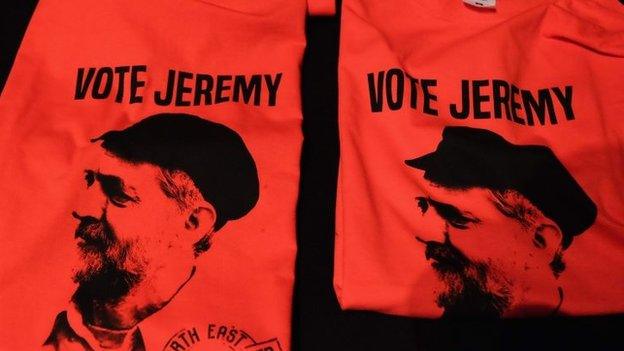
Jeremy Corbyn has a fervent fan base but how many will vote?
In the first round of voting Andy Burnham and Jeremy Corbyn were level pegging with an equal number of first preferences - 32%. Yvette Cooper got 29% and Liz Kendall 7%.
Ms Kendall was knocked out of the contest, with her transfers mainly going to Ms Cooper which took her ahead of Mr Corbyn.
Mr Corbyn was then eliminated and the final result, following the reallocation of Corbyn voters' preferences, handed victory to Mr Burnham, with 54%.
But what about the unions?
Britain's two biggest trade unions, Unite and Unison, have both endorsed Mr Corbyn.
'Rock star'
And figures seen by the BBC suggest that the vast majority of the 189,000 affiliated trade unionists eligible to vote in the Labour leadership election are members of unions which recommend a Corbyn vote.
But individual trade union members don't simply do what their union leaders tell them.
And, finally, there is the "rock star" reception Mr Corbyn is receiving as he tours the country.
The veteran left-winger has certainly fired up the Labour leadership campaign in a way the other candidates have not.
He is frequently addressing not only the hundreds of people filling into venues to hear him speak, but queues of disappointed crowds outside who couldn't fit in.
But not everyone attending Corbyn's rallies will have a vote in Labour's leadership election.
It is not unusual to see large crowds of people gathering at anti-austerity demonstrations.
So while Jeremy Corbyn becoming the next Labour leader is a very real possibility, it's a hotly-contested race and, in truth, no one knows what's going to happen.


Leadership contenders: Liz Kendall, Andy Burnham, Yvette Cooper and Jeremy Corbyn
Labour leadership contest
Who are the candidates? Andy Burnham, Yvette Cooper, Jeremy Corbyn, Liz Kendall
Dates: Ballot papers were sent out on 14 August; voting can take place by post or online. They must be returned by 10 September. The result is announced on 12 September
Who can vote? All party members, registered supporters and affiliated supporters - including those joining via a union. More than 160,000 people signed up to vote as supporters, full members or union affiliates in the final days before the registration deadline, bringing the total size of the electorate to 610,000
What is the voting system? The Alternative Vote system is being used, with voters asked to rank candidates in order of preference
How does it work? If no candidate wins outright with more than 50% of first preferences, whoever is in fourth place drops out and the second preferences of their backers are reallocated to the other candidates. If there is still no winner the third placed candidate is then eliminated with their second preferences similarly reallocated. The candidate who has accumulated the most votes through the different rounds then wins.
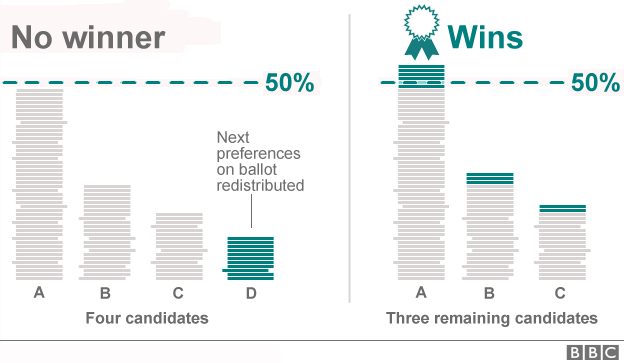

- Published20 August 2015
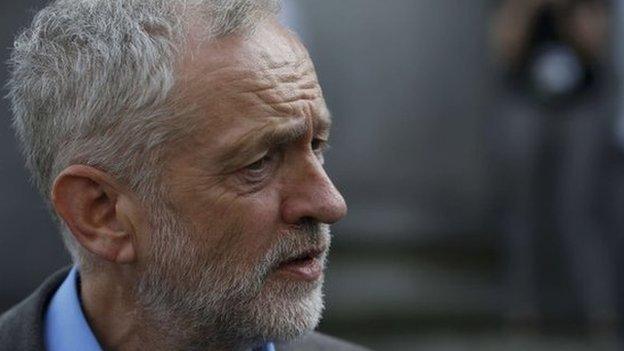
- Published12 September 2015
